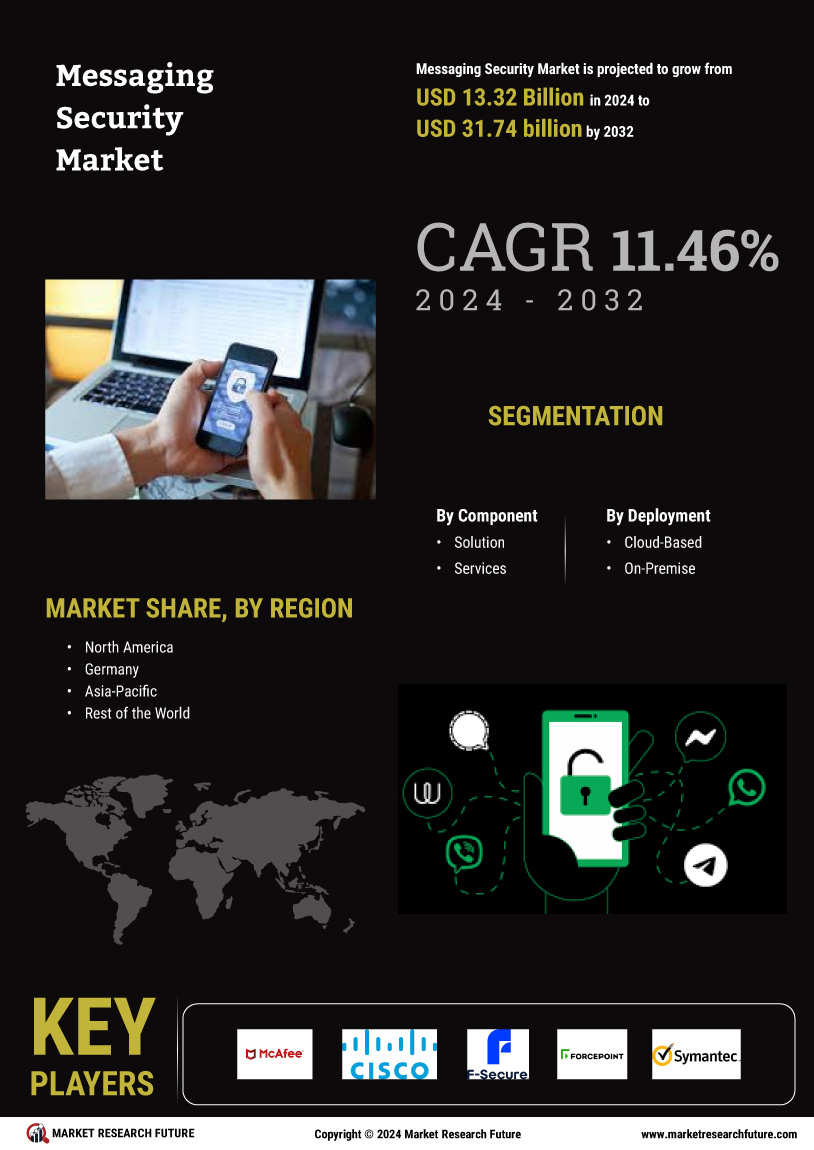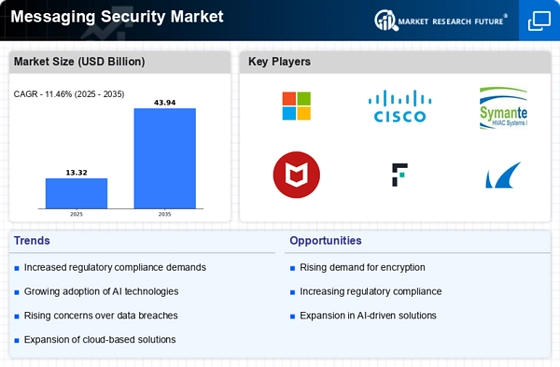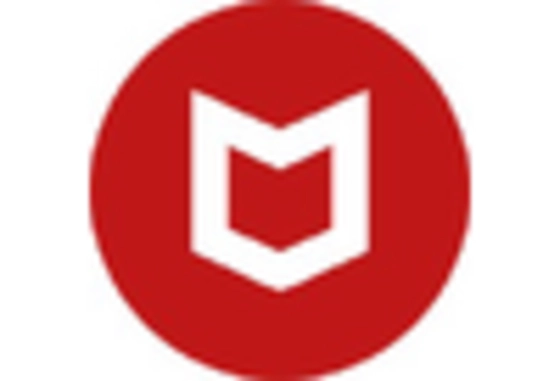Rising Cybersecurity Threats
The Messaging Security Market is experiencing heightened demand due to the increasing frequency and sophistication of cyber threats. Organizations are facing a surge in phishing attacks, ransomware, and data breaches, which necessitate robust messaging security solutions. According to recent data, the number of reported phishing attacks has increased by over 60% in the past year alone. This alarming trend compels businesses to invest in advanced security measures to protect sensitive information communicated through messaging platforms. As a result, the Messaging Security Market is likely to witness substantial growth as companies prioritize safeguarding their digital communications against evolving threats.
Increased Remote Work Culture
The Messaging Security Market is adapting to the evolving work environment characterized by a significant shift towards remote work. As more employees work from home, the reliance on digital communication tools has surged, leading to an increased risk of security vulnerabilities. Organizations are compelled to implement robust messaging security solutions to ensure secure communication among remote teams. Data suggests that remote work has led to a 40% increase in the use of messaging applications, highlighting the urgent need for effective security measures. Consequently, the Messaging Security Market is poised for growth as businesses seek to protect their remote communication channels.
Growing Awareness of Data Privacy
The Messaging Security Market is benefiting from a growing awareness of data privacy among consumers and businesses alike. As individuals become more conscious of their digital footprint, there is a rising demand for secure messaging solutions that protect personal information. Organizations are recognizing the importance of maintaining customer trust by implementing robust messaging security measures. This shift in consumer expectations is driving businesses to invest in secure communication platforms. Consequently, the Messaging Security Market is expected to expand as companies prioritize data privacy and seek to enhance their messaging security frameworks.
Regulatory Compliance Requirements
The Messaging Security Market is significantly influenced by the stringent regulatory landscape that organizations must navigate. Compliance with regulations such as GDPR, HIPAA, and CCPA mandates that businesses implement effective messaging security protocols to protect personal and sensitive data. Failure to comply can result in hefty fines and reputational damage. As organizations strive to meet these regulatory requirements, the demand for comprehensive messaging security solutions is expected to rise. This trend indicates that the Messaging Security Market will continue to expand as companies seek to align their communication practices with legal standards and protect their customers' data.
Integration of Advanced Technologies
The Messaging Security Market is witnessing a transformative phase with the integration of advanced technologies such as artificial intelligence and machine learning. These technologies enhance the ability to detect and respond to threats in real-time, thereby improving overall messaging security. AI-driven solutions can analyze vast amounts of data to identify patterns indicative of potential security breaches. As organizations increasingly adopt these technologies, the Messaging Security Market is likely to experience accelerated growth. The potential for automation and improved threat intelligence positions the industry favorably in the face of evolving cyber threats.


















Leave a Comment